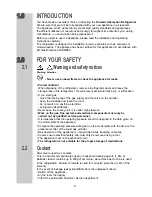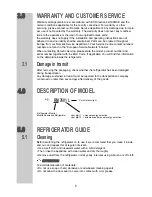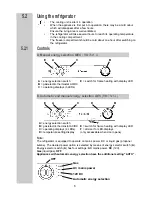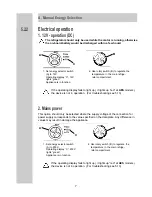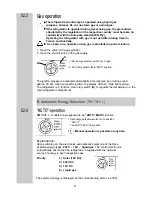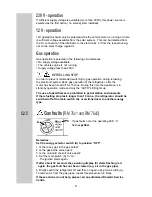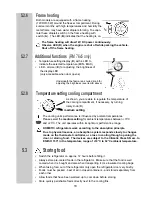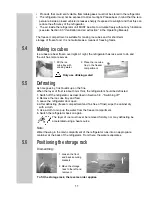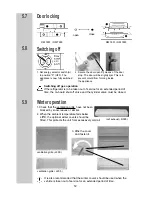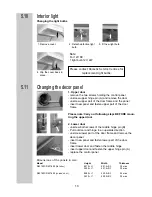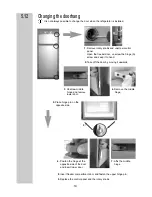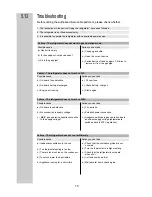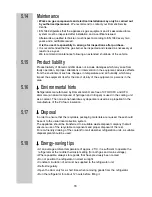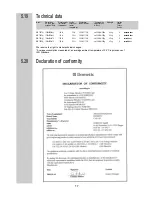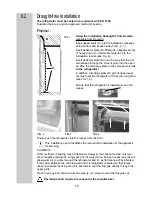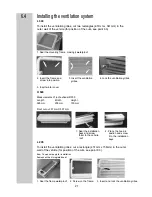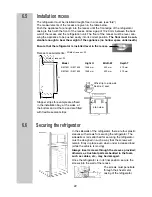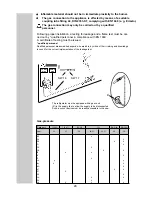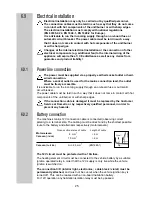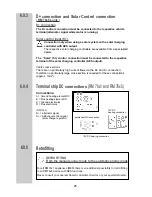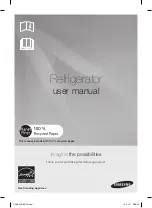
11
Making ice cubes
Ice cubes are best frozen overnight. At night, the refrigerator has less work to do and
the unit has more reserves.
Defrosting
As time goes by, frost builds up on the fins.
When the layer of frost is about 3mm thick, the refrigerator should be defrosted.
1. Switch off the refrigerator, as described in Section 5.8 - "Switching off".
2. Remove the ice cube tray and food.
3. Leave the refrigerator door open.
4. After defrosting (freezer compartment and fins free of frost), wipe the cabinet dry
with a cloth.
5. Use a cloth to mop up the water from the freezer compartment.
6. Switch the refrigerator back on again.
The layer of ice must never be removed forcibly, nor may defrosting be
accelerated using a heat source.
Note:
Water thawing in the main compartment of the refrigerator runs into an appropriate
container at the back of the refrigerator. From there, the water evaporates.
Positioning the storage rack
5.5
5.6
1. Fill the ice
cube tray with
drinking water.
2. Place the ice cube
tray in the freezer
compartment.
5.4
Dismantling:
Only use drinking water!
1. Loosen the front
and back securing
brackets.
2. Move the storage
rack to the left and
remove it.
To fit the storage rack, the reverse order applies.
1.
2
.
Products that could emit volatile, flammable gases must not be stored in the refrigerator
The refrigerator must not be exposed to direct sunlight. Please bear in mind that the tem-
perature inside a closed vehicle increases sharply if exposed to sunlight and that this can
reduce the efficiency of the refrigerator.
The air inside the refrigerator unit MUST be able to circulate freely without any hindrance.
(see also Section 6.3 "Ventilation and air extraction" in the Operating Manual).
The freezer compartment is suitable for making ice cubes and for short-term
storage of frozen food. It is not suitable as a means of freezing foods.




